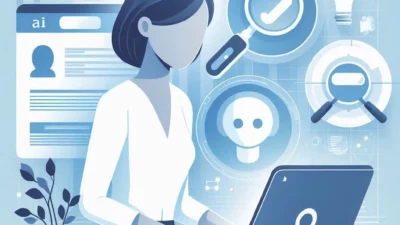Math AI tools have exploded in popularity for kids’ education. Sooner or later, your kid will use these apps that allow to take a picture of a math problem and get an instant solution. But are they helping or hurting our children’s learning?
As a parent or educator, it’s important to understand the pros and cons, so let’s break it down.
How do Math AI tools Impact Kids Education?
Math AI tools for kids are changing homework time in many homes. Kids no longer have to rack their brains. They just take a picture with their phones and get step-by-step instructions in seconds.
This change affects how children practice math. Some kids use these tools to check their work, while others — to cheat on exams. The results are mixed. For some students — better grades. For others — dependence on the apps, and they can’t solve problems without digital help.
What are AI Tools for Math?
Math AI tools are smartphone or web apps that use artificial intelligence to solve math problems. They are usually based on ChatGPT or other AI models. Here’s how they work: students take a photo of a problem from their textbook, worksheet, or board. The AI recognizes the mathematical notation and provides solutions.
The better apps show step-by-step solutions, break down complex problems into smaller, easier-to-handle pieces, and explain the logic behind the solution. More primitive ones spit out the answer, which is often isn’t even correct. This can have a huge impact on the quality of your child’s education.
Overchat AI is a popular choice among students, and one of the better math AI apps. The app can recognize problems written by hand or printed, and it does so with great accuracy. Beyond just answering questions, Overchat AI explains each step in simple language. It also includes practice problems that are like the one in the photograph.
These tool works for:
- Simple math
- Algebra and equations.
- Geometry problems
- Calculus
- Word problems
- Statistics
Pros of AI Math Solvers
As we mentioned, there are advantages and disadvantages to math AI apps for students. Here are some of the positive effects:
- Kids get unstuck immediately instead of waiting for the next day’s class. This prevents frustration and keeps them moving forward.
- Unlike tutors or parents, AI tools are always ready to help. Late-night study sessions become more productive.
- Good AI tools show different ways to solve the same problem. This helps kids find the method that clicks for them.
- Students who check their work with AI tools often feel more confident. They know they’re on the right track before submitting assignments.
- Not every family can afford private tutoring. AI tools democratize access to math help.
- Many parents struggle to help with modern math methods. AI tools bridge this gap, allowing parents to support their children’s learning.
This makes the case that your child should use AI to get help with homework. But is it all just good, or are there any disadvantages?
Cons of Math AI Tools
Let’s discuss the possible negative effects of math AI tools:
- The biggest risk is obvious: kids can photograph every problem and copy answers without learning. This makes it seem like they understand what they’re talking about.
- Mathematics builds on itself. Students who don’t learn the basics will have a hard time later on. AI tools can hide these problems until it’s too late.
- Solving difficult problems helps you be more persistent and creative. Instant solutions stop kids from learning and growing.
- Students who depend on AI tools often panic during tests. They can’t perform without their digital crutch.
- Teachers find it hard to know if students’ homework shows that they understand the material or if it was done with the help of an AI. This disrupts the connection between teaching and learning.
- Kids who used to work together on difficult problems now use apps instead. This limits the chances for people to learn from each other.
Bottom Line
Math AI tools aren’t necessarily good or bad for kids’ education. They can help or hurt learning, depending on how they’re used. With or with AI, kids should try problems first, then use AI tools to check their work or understand mistakes.
Math AI is not unlike training wheels on a bicycle. They help kids get a feel for moving on two wheels and provide support. But eventually, the wheels must come off. Students need to learn to solve problems on their own.
The future probably lies somewhere in the middle. Schools can use AI tools in their lessons while teaching students to use them wisely. As these tools improve, it’s important to remember that they can’t replace the deep understanding that comes from doing math the old-fashioned way. If you use them the right way, they can be very helpful. If you don’t use them the right way, they can hurt your learning. So solve responsibly.

Lexy Summer is a talented writer with a deep passion for the art of language and storytelling. With a background in editing and content creation, Lexy has honed her skills in crafting clear, engaging, and grammatically flawless writing.



